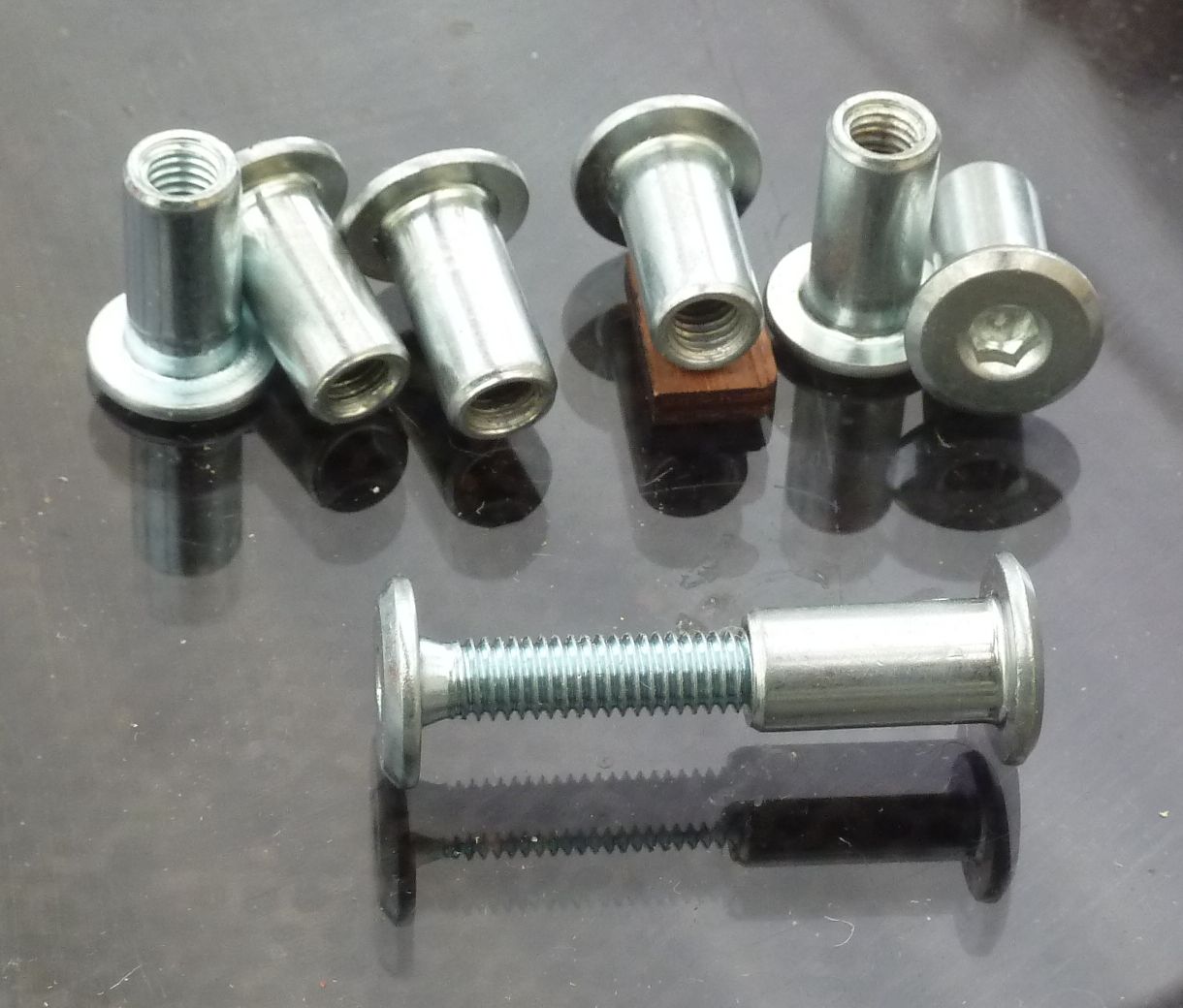So I'm trying to find some alternative to rivets into fiberglass, and I'm specifically NOT thinking riv-nuts.
What I'm picturing for the nut side is a large flange (probably 2x the diameter of the screw head) that is flat. I think the screw can go all the way through, but if one used the right adhesive, the insert would be permanent into whatever it's put into (wood, plastic, my case- fiberglass).
I have no idea what that would be called to even look for it.
Not sex bolts? There are specific inserts for plastics that press into a hole that you could epoxy.
Frankly, I've more often heard them called "T-nuts", but whatever blows yer skirt up.
I've always considered t- nuts to be the ones with prongs that press into wood.

Sex nuts are also called binding screws or chicago screws.
How thick of an assembly are you trying to put together?
I saw some t-nuts with a flat flange last time I got some of the toothed ones.
Not all T-nuts have the teeth for wood. Some just look like a flanged nut. They are designed to use like a T-nut, but you can use screws into the substrate, or you can epoxy them and the holes give it more surface area.

The original bolts pictured are typically called cabinet connector bolts which is a broader category with multiple possibilities.. Sometimes called dowel screws, but those are too often confused with cross-dowel bolts. Search McMaster for Barrel bolts or Binding Barrels.
McMaster calls the non-toothed T-nuts "surface mount nuts."
Here
matthewmcl (Forum Supporter) said:
Sex nuts are also called binding screws or chicago screws.
How thick of an assembly are you trying to put together?
Having not seen the camper shell in person, I'm not exactly sure. But I expect it to be like a boat, whatever that is. My thinking is that the sex or T nut will let the part be tight, but very much limit the crush load on the fiberglass. Let alone having a nice smooth outside surface.
The camper trailers use a lot of rivets- just thinking that with a little more effort, a fastener would be a better choice.
Then again, much of what's put on to the outside have a hidden back due the inside surface- so using a rivet in a blind location is the right thing.
Curtis73 (Forum Supporter) said:
McMaster calls the non-toothed T-nuts "surface mount nuts."
Here
Now that I know what to call it- here's the one for fiberglass- https://www.mcmaster.com/blind-nuts/tee-nut-inserts-for-fiberglass/
This board rocks.
I always called them binding posts because we use them for plans. But boy did I miss an opportunity by not knowing I could ask for sex nuts on my purchase order!
It's kind of the reverse of what you described, but maybe an elevator bolt would work. Combine it with a nut and a fender washer. I'm pretty sure Ace Hardware stores have them in their nut and bolt section.

The aerospace ones I've used are made by Click-Bond. They have a zillion different options.
stuart in mn said:
It's kind of the reverse of what you described, but maybe an elevator bolt would work. Combine it with a nut and a fender washer. I'm pretty sure Ace Hardware stores have them in their nut and bolt section.

Ooh- Like that a lot- it would make putting things together a whole lot easier- as the stud could be put into the wall, and then one could go to the other side and put in the structure and nut. The thing I would want to do with that is cut the hole more square so that the fiberglass would not get damaged when that is screwed in.
This is an example of the Click-bond nut-plate:

You pre-drill the hole, and bond-prep the mounting surface (most important step).
Then apply the adhesive - the Click-Bond stuff is the smelly-ammonia acrylic-based stuff that costs more than God. You could use structural adhesive.
Then you use the rubber center-thingy to pull the insert up tight and in position. The stretchy rubber both holds the insert tight and keeps the adhesive out of the threads. It's slick. Once cured, you're ready to go.
Another option is a regular MIL-spec nut-plate. It does have rivets, but they only hold the plate in the right spot. From Pegasus Auto Racing:

Advantages of both of these:
- Self-locking
- Insert has some amount of free-float, so your fastener alignment doesn't have to be totally perfect.
- Aerospace-grade so light & strong.
- Made for doing exactly what you have in mind.
- The insert is easily replaceable.
Downsides? $pendy...
In reply to TVR Scott (Forum Supporter) :
That's really cool- far more specific to what I'm thinking about. I will have to contact Click-Bond for my specific application. But that looks like exactly what I would want to do.
Assuming I would even consider going down that path. I'm not a great wood worker, let alone all of the plumbing and electrical that would have to be re-installed to make the trailer work.
You're working on an FG-bodied RV or something?
One consideration would be if there is a foam core involved. You have to do fasteners a little differently in those cases.
+1 on "not a great woodworker." I'm right there with you on that.
NINJA-EDIT!
Aircraft Spruce has Click-Bond nut-plate kits - #10-32. Four fasteners with adhesive for $30. Not cheap but readily available for purchase.







































